MENU
The Electronic Scholarly Publishing Project: Providing access to classic scientific papers and other scholarly materials, since 1993. More About: ESP | OUR CONTENT | THIS WEBSITE | WHAT'S NEW | WHAT'S HOT
Comparative Timelines
The ESP Timeline (one of the site's most popular features) has been completely updated to allow the user to select (using the timeline controls above each column) different topics for the left and right sides of the display.
Select:
New Left Column
New Left Column
Dates
Decade
New Right Column
New Right Column
(no entry for this year)
1910
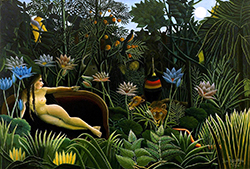 Painting by Henri Rousseau: The Dream (French: Le Rêve, occasionally also known as Le Songe or Rêve exotique) is a large oil-on-canvas painting, one of more than 25 Rousseau paintings with a jungle theme. His last completed work, it was first exhibited at the Salon des Indépendants from 18 March to 1 May 1910, a few months before his death on 2 September 1910. Rousseau's earlier works had received a negative reception, but poet and critic Guillaume Apollinaire remarked on its debut: "The picture radiates beauty, that is indisputable. I believe nobody will laugh this year." The Dream is the largest of the jungle paintings, measuring 6' 8.5" × 9' 9.5". It features an almost surreal portrait of Yadwigha (Jadwiga), Rousseau's Polish mistress from his youth, lying naked on a divan to the left of the painting, gazing over a landscape of lush jungle foliage, including lotus flowers, and animals including birds, monkeys, an elephant, a lion and lioness, and a snake. French art dealer Ambroise Vollard (the same Vollard who purchased 250 paintings from Cézanne for 50 francs each) bought the painting from Rousseau in February 1910
Painting by Henri Rousseau: The Dream (French: Le Rêve, occasionally also known as Le Songe or Rêve exotique) is a large oil-on-canvas painting, one of more than 25 Rousseau paintings with a jungle theme. His last completed work, it was first exhibited at the Salon des Indépendants from 18 March to 1 May 1910, a few months before his death on 2 September 1910. Rousseau's earlier works had received a negative reception, but poet and critic Guillaume Apollinaire remarked on its debut: "The picture radiates beauty, that is indisputable. I believe nobody will laugh this year." The Dream is the largest of the jungle paintings, measuring 6' 8.5" × 9' 9.5". It features an almost surreal portrait of Yadwigha (Jadwiga), Rousseau's Polish mistress from his youth, lying naked on a divan to the left of the painting, gazing over a landscape of lush jungle foliage, including lotus flowers, and animals including birds, monkeys, an elephant, a lion and lioness, and a snake. French art dealer Ambroise Vollard (the same Vollard who purchased 250 paintings from Cézanne for 50 francs each) bought the painting from Rousseau in February 1910
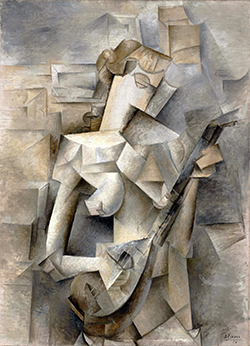 Painting by Pablo Picasso: Girl with a Mandolin is an early example of the artist's analytic cubist style. By the winter of 1909/10 Picasso's pictorial language had already become increasingly hard to decipher. He was steadily divesting his paintings of mere likeness, not that this was synonymous with a progressive elimination of the subject: his paintings were becoming more abstract but not entirely so.
Painting by Pablo Picasso: Girl with a Mandolin is an early example of the artist's analytic cubist style. By the winter of 1909/10 Picasso's pictorial language had already become increasingly hard to decipher. He was steadily divesting his paintings of mere likeness, not that this was synonymous with a progressive elimination of the subject: his paintings were becoming more abstract but not entirely so.
 On July 4, boxer Jack Johnson defeats Jim Jeffries in Reno, Nevada, to become the first African-American world heavyweight champion.
On July 4, boxer Jack Johnson defeats Jim Jeffries in Reno, Nevada, to become the first African-American world heavyweight champion.
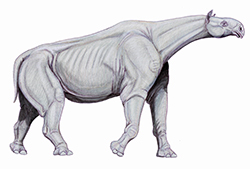 A few years after the find of some isolated teeth from the same species, British paleontologist Clive Forster Cooper finds better specimens of what will later be identified as Paraceratherium in an area that will later be part of Pakistan. A century later, Paraceratherium will still hold the title of the biggest land mammal yet discovered.
A few years after the find of some isolated teeth from the same species, British paleontologist Clive Forster Cooper finds better specimens of what will later be identified as Paraceratherium in an area that will later be part of Pakistan. A century later, Paraceratherium will still hold the title of the biggest land mammal yet discovered.
While digging the foundation for an imposing home, two laborers, Mercer and Crittenden, discover the remains of a cremation from the Iron Age, including a Neolithic axe and a fossil echinoid.
Three companies merge to become C-T-R
(no entry for this year)
1911
 Painting by Georges Braque: The Portuguese
Painting by Georges Braque: The Portuguese
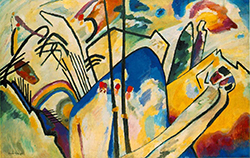 painting by Wassily Kandinsky: Composition IV is the fourth of a series of paintings that explore the artist's attempts to represent the structure and form of music through the medium of painting. The painting measures 62 7/8 × 98 5/8 inches, and it is in the Hermitage Museum in St. Petersburg, Russia. It was made using oil paints on canvas.
painting by Wassily Kandinsky: Composition IV is the fourth of a series of paintings that explore the artist's attempts to represent the structure and form of music through the medium of painting. The painting measures 62 7/8 × 98 5/8 inches, and it is in the Hermitage Museum in St. Petersburg, Russia. It was made using oil paints on canvas.
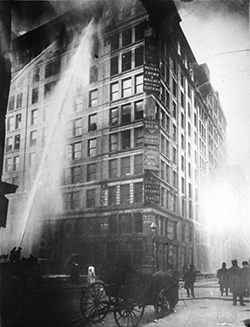 A fire inside the Triangle Shirtwaist Company factory in New York City's garment district kills 146 workers, mostly immigrant Jewish and Italian women in their teens and early 20s. Most women could not escape the burning building because the doors to the stairwells and exits were locked to keep the workers from stealing linen from the factory. It is the deadliest workplace incident in the city's history until 9/11.
A fire inside the Triangle Shirtwaist Company factory in New York City's garment district kills 146 workers, mostly immigrant Jewish and Italian women in their teens and early 20s. Most women could not escape the burning building because the doors to the stairwells and exits were locked to keep the workers from stealing linen from the factory. It is the deadliest workplace incident in the city's history until 9/11.
Winston Churchill is appointed First Lord of the Admiralty.
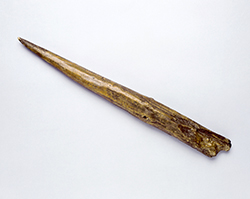 A chance discovery turns up the astonishingly well-preserved Clacton Spear. Made of yew and over 400,000 years old, it's one of the world's oldest wooden artifacts.
A chance discovery turns up the astonishingly well-preserved Clacton Spear. Made of yew and over 400,000 years old, it's one of the world's oldest wooden artifacts.
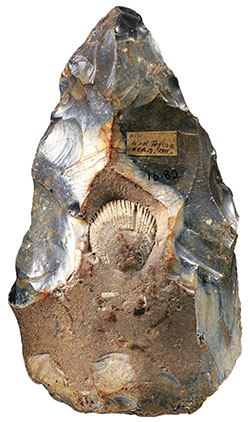 A hand axe, possibly 200,000 years old and of Neanderthal design, is found in Norfolk, England. The axe has been fashioned to give prominence to a fossil bivalve.
A hand axe, possibly 200,000 years old and of Neanderthal design, is found in Norfolk, England. The axe has been fashioned to give prominence to a fossil bivalve.
Charles Dawson discovers the Piltdown skull in southern England. Excavations of faked fossils will continue for years.
(no entry for this year)
1912
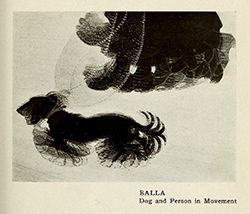 Painting by Giacomo Balla: Dynamism of a Dog on a Leash (Italian: Dinamismo di un cane al guinzaglio), sometimes called Dog on a Leash or Leash in Motion, depicts a dachshund on a leash and the feet of a lady walking it, both in rapid motion as indicated by the blurring and multiplication of their parts. It is considered one of his best-known works, and one of the most important works, in Futurism. Chronophotographic studies of animals in motion, created by scientist Étienne–Jules Marey beginning in the 1880s, led to the introduction in painting of techniques to show motion, such as blurring, multiplication, and superimposition of body parts — perhaps in an effort to imitate these mechanical images. Such multiplication can be see in Marcel Duchamp's Nude Descending a Staircase, No. 2, painted the same year as Balla's painting. Balla's interest in capturing a single moment in a series of planes was inspired by his fascination with chronophotography. In later, more abstract works created during World War I, Balla used planes of color to suggest movement.
Painting by Giacomo Balla: Dynamism of a Dog on a Leash (Italian: Dinamismo di un cane al guinzaglio), sometimes called Dog on a Leash or Leash in Motion, depicts a dachshund on a leash and the feet of a lady walking it, both in rapid motion as indicated by the blurring and multiplication of their parts. It is considered one of his best-known works, and one of the most important works, in Futurism. Chronophotographic studies of animals in motion, created by scientist Étienne–Jules Marey beginning in the 1880s, led to the introduction in painting of techniques to show motion, such as blurring, multiplication, and superimposition of body parts — perhaps in an effort to imitate these mechanical images. Such multiplication can be see in Marcel Duchamp's Nude Descending a Staircase, No. 2, painted the same year as Balla's painting. Balla's interest in capturing a single moment in a series of planes was inspired by his fascination with chronophotography. In later, more abstract works created during World War I, Balla used planes of color to suggest movement.
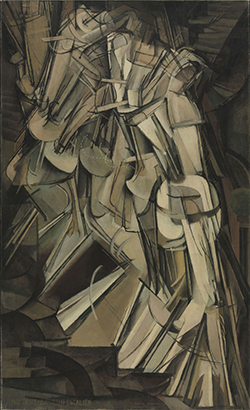 Painting by Marcel Duchamp: Nude Descending a Staircase causes an uproar at the 1913 Armory show in New York City. In interviews, Duchamp suggested that he had been influenced by seeing stop-motion images and that his aim was to achieve " a static representation of movement, a static composition of indications of various positions taken by a form in movement." In a New York Times review, an art critic described the painting as resembling "an explosion in a shingle factory."
Painting by Marcel Duchamp: Nude Descending a Staircase causes an uproar at the 1913 Armory show in New York City. In interviews, Duchamp suggested that he had been influenced by seeing stop-motion images and that his aim was to achieve " a static representation of movement, a static composition of indications of various positions taken by a form in movement." In a New York Times review, an art critic described the painting as resembling "an explosion in a shingle factory."
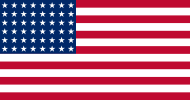 The US flag is modified to have forty-eight stars, reflecting the addition of two new states: Arizona and New Mexico.
The US flag is modified to have forty-eight stars, reflecting the addition of two new states: Arizona and New Mexico.
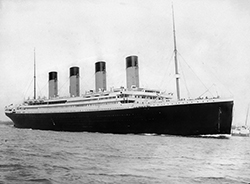 On April 10, the RMS Titanic — the largest, most advanced, and most luxurious passenger ship in the world — set off on her maiden voyage from Southampton, England to New York City. Four days later, this unsinkable marvel of modern engineering rammed an iceberg and sank in the North Atlantic, resulting in the deaths of 1,517 people.
On April 10, the RMS Titanic — the largest, most advanced, and most luxurious passenger ship in the world — set off on her maiden voyage from Southampton, England to New York City. Four days later, this unsinkable marvel of modern engineering rammed an iceberg and sank in the North Atlantic, resulting in the deaths of 1,517 people.

 The Republic of China is a nationally proclaimed with Sun Yat-sen as president. He appoints Chiang Kai-shek as his military advisor.
The Republic of China is a nationally proclaimed with Sun Yat-sen as president. He appoints Chiang Kai-shek as his military advisor.
Alfred Wegener proposes the theory of continental drift. His ideas will be almost completely ignored until the late 1960s.
Thomas Edison introduces a short-lived 22 mm home motion picture format using acetate "safety" film manufactured by Kodak.
Vest Pocket Kodak using 127 film.
(no entry for this year)
1913
 Woodrow Wilson becomes twenty-eighth president of the United States.
Woodrow Wilson becomes twenty-eighth president of the United States.
On April 11, President Woodrow Wilson initiates the racial segregation of workplaces, restaurants, and lunchrooms and all federal offices across the nation.
 Thomas Mann publishes Death in Venice.
Thomas Mann publishes Death in Venice.
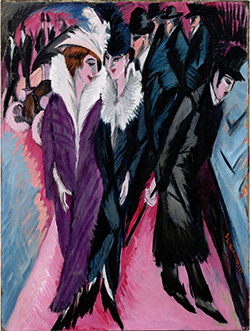 Painting by Ernst Ludwig Kirchner: Street, Berlin shows Berlin in 1913,` before the outbreak of World War 1. At this time, Kirchner painted several different street scenes that illustrated the chaos of city life and the relationship between men and women. The mass of men in the background do not have any identifying features, but instead appear as a copy of each other. Their clothes flow into one another and their non-distinct facial features cause you to connect with the women because they are the only two with a sense of identity. Kirchner uses some anti-naturalistic color in this piece including the skin of the figures which varies between shades of pink and orange as well as the blue and pink shades in the scenery. The anti-naturalistic tones are common in the German Expressionism and his other work during this time period.
Painting by Ernst Ludwig Kirchner: Street, Berlin shows Berlin in 1913,` before the outbreak of World War 1. At this time, Kirchner painted several different street scenes that illustrated the chaos of city life and the relationship between men and women. The mass of men in the background do not have any identifying features, but instead appear as a copy of each other. Their clothes flow into one another and their non-distinct facial features cause you to connect with the women because they are the only two with a sense of identity. Kirchner uses some anti-naturalistic color in this piece including the skin of the figures which varies between shades of pink and orange as well as the blue and pink shades in the scenery. The anti-naturalistic tones are common in the German Expressionism and his other work during this time period.
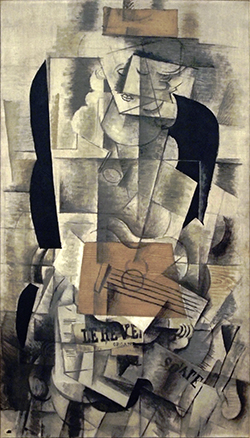 Painting by Georges Braque: Woman with a Guitar. A relatively large painting it is 130 cm by 73 cm, and utilised both oil paint and charcoal. While the painting is abstracted the basic subject can still be seen towards the top in the feminine mouth and eye, as well as the brown trapezoid shape containing the strings of a guitar.
Painting by Georges Braque: Woman with a Guitar. A relatively large painting it is 130 cm by 73 cm, and utilised both oil paint and charcoal. While the painting is abstracted the basic subject can still be seen towards the top in the feminine mouth and eye, as well as the brown trapezoid shape containing the strings of a guitar.
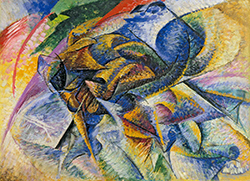 Painting by Umberto Boccioni: Dynamism of a Cyclist (Dinamismo di un Ciclista) demonstrates the Futurist preoccupation with speed, modern methods of transport, and the depiction of the dynamic sensation of movement. Futurism was an early twentieth-century movement in Italy that sought to free the country from what the Futurists saw as the dead weight of its classical past. The Futurists were preoccupied with the technology and dynamism of modern life. The movement found its expression primarily in literature and art.
Painting by Umberto Boccioni: Dynamism of a Cyclist (Dinamismo di un Ciclista) demonstrates the Futurist preoccupation with speed, modern methods of transport, and the depiction of the dynamic sensation of movement. Futurism was an early twentieth-century movement in Italy that sought to free the country from what the Futurists saw as the dead weight of its classical past. The Futurists were preoccupied with the technology and dynamism of modern life. The movement found its expression primarily in literature and art.
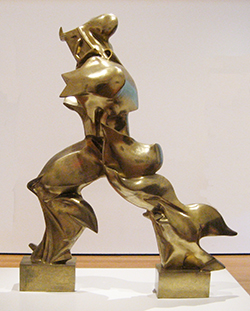 Sculpture by Umberto Boccioni: Unique Forms of Continuity in Space (Italian: Forme uniche della continuità nello spazio) is seen as an expression of movement and fluidity. The sculpture is depicted on the obverse of the Italian-issue 20 cent euro coin. The Futurist movement was striving to portray speed and forceful dynamism in their art. Boccioni, though trained as a painter, began sculpting in 1912. He exclaimed that "these days I am obsessed by sculpture! I believe I have glimpsed a complete renovation of that mummified art." The following year Boccioni completed the sculpture. His goal for the work was to depict a "synthetic continuity" of motion instead of an "analytical discontinuity" that he saw in artists like František Kupka and Marcel Duchamp.
Sculpture by Umberto Boccioni: Unique Forms of Continuity in Space (Italian: Forme uniche della continuità nello spazio) is seen as an expression of movement and fluidity. The sculpture is depicted on the obverse of the Italian-issue 20 cent euro coin. The Futurist movement was striving to portray speed and forceful dynamism in their art. Boccioni, though trained as a painter, began sculpting in 1912. He exclaimed that "these days I am obsessed by sculpture! I believe I have glimpsed a complete renovation of that mummified art." The following year Boccioni completed the sculpture. His goal for the work was to depict a "synthetic continuity" of motion instead of an "analytical discontinuity" that he saw in artists like František Kupka and Marcel Duchamp.
The federal income tax is introduced in the United States with the 16th amendment.
 A. H. Sturtevant, an undergraduate working with Morgan at Columbia, provides the experimental basis for the linkage concept in Drosophila and produces the first GENETIC MAP.
A. H. Sturtevant, an undergraduate working with Morgan at Columbia, provides the experimental basis for the linkage concept in Drosophila and produces the first GENETIC MAP.
Geologist-physicist Arthur Holmes concludes that the breakdown of radioactive isotopes in igneous rocks can be used to determine when the rocks solidified. The ability to determine the absolute ages of rocks will enable scientists to better date fossils.
 Roland Garros, a French aviator, becomes the first person to fly across the Mediterranean. Garros' original plan was to fly from St. Raphael in France to Bizerta, Tunisia, with the possibility of a fueling stop on Sardinia. En route, the trip seemed to be going well, so he skipped the refueling stop and flew directly to Bizerta, where he arrived at 1:45pm, with about five liters of fuel left in his tank.
Roland Garros, a French aviator, becomes the first person to fly across the Mediterranean. Garros' original plan was to fly from St. Raphael in France to Bizerta, Tunisia, with the possibility of a fueling stop on Sardinia. En route, the trip seemed to be going well, so he skipped the refueling stop and flew directly to Bizerta, where he arrived at 1:45pm, with about five liters of fuel left in his tank.
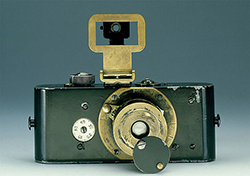 Oskar Barnack develops a prototype camera for testing 35mm movie film. This device, now often referred to as an UR-Leica, was quickly recognized as a miniature camera for producing still images. A dozen years later, the first commercially available 35mm still camera was marketed as the Leica I.
Oskar Barnack develops a prototype camera for testing 35mm movie film. This device, now often referred to as an UR-Leica, was quickly recognized as a miniature camera for producing still images. A dozen years later, the first commercially available 35mm still camera was marketed as the Leica I.
Kodak makes 35 mm panchromatic motion picture film available on a bulk special order basis.
 Hans Geiger unveils his radiation detector.
Hans Geiger unveils his radiation detector.
(no entry for this year)
1914
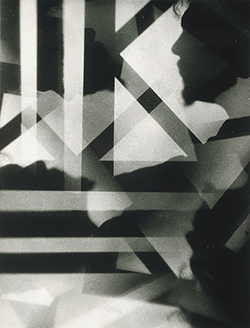 Photograph by Alvin Langdon Coburn: Vortograph — a kaleidoscopic effect — created by placing mirrors in triangular arrangements around a lens.
Photograph by Alvin Langdon Coburn: Vortograph — a kaleidoscopic effect — created by placing mirrors in triangular arrangements around a lens.
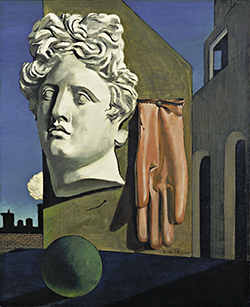 Painting by Giorgio de Chirico: The Song of Love (also known as Le chant d'amour or Love Song; 1914) is one of the most famous works by de Chirico and an early example of the surrealist style, though it was painted ten years before the movement was "founded" by André Breton in 1924. It depicts an outdoor architectural setting similar to other works by de Chirico at this time. This time however, the main focus is a small wall on which is mounted a Greek sculpted head and a surgeon's glove. Below it is a green ball. On the horizon is the outline of a locomotive, an image that recurs several times during this period of de Chirico's career.
Painting by Giorgio de Chirico: The Song of Love (also known as Le chant d'amour or Love Song; 1914) is one of the most famous works by de Chirico and an early example of the surrealist style, though it was painted ten years before the movement was "founded" by André Breton in 1924. It depicts an outdoor architectural setting similar to other works by de Chirico at this time. This time however, the main focus is a small wall on which is mounted a Greek sculpted head and a surgeon's glove. Below it is a green ball. On the horizon is the outline of a locomotive, an image that recurs several times during this period of de Chirico's career.
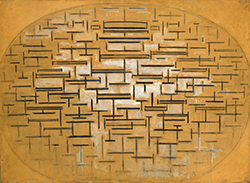 Painting by Piet Mondrian: The Ocean 5 is basically an abstracted pier that is composed of vertical lines that touch the base of the oval, which stretches into the ocean and short crosses that give the impression of light flickering on the water surface.
Painting by Piet Mondrian: The Ocean 5 is basically an abstracted pier that is composed of vertical lines that touch the base of the oval, which stretches into the ocean and short crosses that give the impression of light flickering on the water surface.
The Ottoman Empire entered World War I on the side of the Central Powers, fighting against the Allied Powers. The war proved costly for the empire, leading to economic hardship, military defeats, and ultimately, its dissolution.
World War I begins after Archduke Francis Ferdinand, heir to the Austrian throne, and his wife are assassinated in Sarajevo, Bosnia, on June 28 by a Serbian nationalist.
Charles Doolittle Walcott identifies fossil bacteria in Cryptozoon-like structures (stromatolites).
Peyrony finds the remains of Neanderthal baby in southwestern France. Because no one knows the bones are Neanderthal, they are not examined closely and are later believed lost. They will be rediscovered and described nearly 90 years later.
Thomas J. Watson Sr. joins C-T-R
Kodak introduces the Autographic film system.
The World, the Flesh and the Devil, made in Kinemacolor, is the first dramatic feature film in color released.
(no entry for this year)
1915
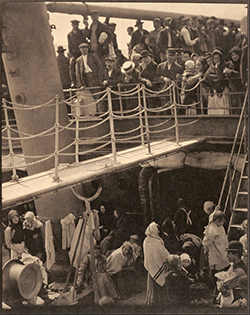 Photograph by Alfred Stieglitz: The Steerage has been hailed as one of the greatest photographs of all time because it captures in a single image both a formative document of its time and one of the first works of artistic modernism. Stieglitz first published The Steerage in the October 1911 issue of Camera Work, which he had devoted to his own photography. It appeared the following year on the cover of the magazine section of the Saturday Evening Mail (20 April 1912), a New York weekly magazine. It was first exhibited in a show of Stieglitz's photographs at "291" in 1913. In 1915 Stieglitz devoted the entire No 7-8 issue of 291 to The Steerage. The only text in the issue were comments on the photo by Paul Haviland and Marius de Zayas.
Photograph by Alfred Stieglitz: The Steerage has been hailed as one of the greatest photographs of all time because it captures in a single image both a formative document of its time and one of the first works of artistic modernism. Stieglitz first published The Steerage in the October 1911 issue of Camera Work, which he had devoted to his own photography. It appeared the following year on the cover of the magazine section of the Saturday Evening Mail (20 April 1912), a New York weekly magazine. It was first exhibited in a show of Stieglitz's photographs at "291" in 1913. In 1915 Stieglitz devoted the entire No 7-8 issue of 291 to The Steerage. The only text in the issue were comments on the photo by Paul Haviland and Marius de Zayas.
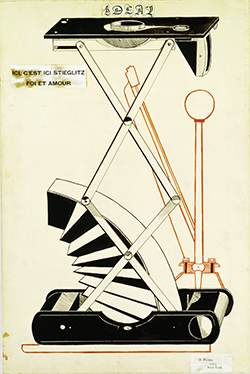 Work by Francis Picabia: Ici, C'est Ici Stieglitz Foi et Amour (Here, this is Stieglitz. Faith and Love) was published in 1915 as the cover of the avant-garde American journal 291. The work was one of a series of witty "machine portraits" by French artist Francis Picabia, soon to become a leading figure in the developing Dada art movement in New York City. The journal's title, named after Alfred Stieglitz's 291 Gallery on Fifth Avenue, pays tribute to the photographer's role in promoting modern art. But the symbolic portrait suggests that he has lost his momentum: it portrays its subject as a limp and broken camera striving toward, but not reaching, the "Ideal," with an automobile gearshift lodged in neutral and a hand brake engaged.
Work by Francis Picabia: Ici, C'est Ici Stieglitz Foi et Amour (Here, this is Stieglitz. Faith and Love) was published in 1915 as the cover of the avant-garde American journal 291. The work was one of a series of witty "machine portraits" by French artist Francis Picabia, soon to become a leading figure in the developing Dada art movement in New York City. The journal's title, named after Alfred Stieglitz's 291 Gallery on Fifth Avenue, pays tribute to the photographer's role in promoting modern art. But the symbolic portrait suggests that he has lost his momentum: it portrays its subject as a limp and broken camera striving toward, but not reaching, the "Ideal," with an automobile gearshift lodged in neutral and a hand brake engaged.
 Calvin Bridges identifies strains of mutant fruit flies with extra pairs of wings. Decades later, these strains will help biologists understand Hox genes that control the head-to-toe anatomy of widely varying animals.
Calvin Bridges identifies strains of mutant fruit flies with extra pairs of wings. Decades later, these strains will help biologists understand Hox genes that control the head-to-toe anatomy of widely varying animals.
 Frederick Twort discovers a virus capable of infecting and destroying bacteria.
Frederick Twort discovers a virus capable of infecting and destroying bacteria.



 Thomas Hunt Morgan, Alfred Henry Sturtevant, Calvin Blackman Bridges, and Hermann Joseph Muller publish The Mechanism of Mendelian Heredity. This monograph provides the first systematic description of the actual mechanisms that control inheritance as evidenced in the Mendelian model. Here, for the first time, the gene is made real.
Thomas Hunt Morgan, Alfred Henry Sturtevant, Calvin Blackman Bridges, and Hermann Joseph Muller publish The Mechanism of Mendelian Heredity. This monograph provides the first systematic description of the actual mechanisms that control inheritance as evidenced in the Mendelian model. Here, for the first time, the gene is made real.
(no entry for this year)
1916
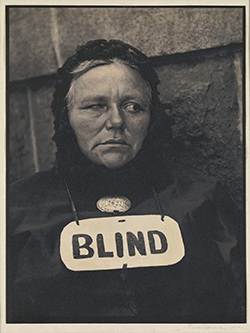 Photograph by Paul Strand:: Blind, taken as part of a series of street portraits. He used a camera outfitted with a special false lens that allowed him to point the camera in one direction while actually taking a photograph ninety degrees to the side. The result was a collection of remarkably natural and unposed photographs.
Photograph by Paul Strand:: Blind, taken as part of a series of street portraits. He used a camera outfitted with a special false lens that allowed him to point the camera in one direction while actually taking a photograph ninety degrees to the side. The result was a collection of remarkably natural and unposed photographs.

 The Sykes–Picot Agreement (a secret agreement between the governments of the UK and France defining their respective spheres of influence and control in the Middle East after the expected downfall of the Ottoman Empire during World War I) is drawn up and signed by Sir Mark Sykes and Fran ois Georges-Picot.
The Sykes–Picot Agreement (a secret agreement between the governments of the UK and France defining their respective spheres of influence and control in the Middle East after the expected downfall of the Ottoman Empire during World War I) is drawn up and signed by Sir Mark Sykes and Fran ois Georges-Picot.
Two duckbill dinosaur fossils, with extremely rare skin impressions, sink to the bottom of the Atlantic when the ship carrying them to London — the SS Mount Temple — is stopped by the German military vessel, the SMS Möwe. The German ship takes the passengers prisoner and then sinks the Mount Temple.
(no entry for this year)
1917
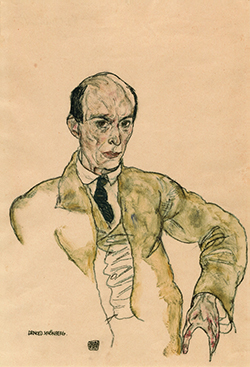 Painting by Egon Schiele: Portrait of the Composer Arnold Schönberg (German: Bildnis des Komponisten Arnold Schönberg)
Painting by Egon Schiele: Portrait of the Composer Arnold Schönberg (German: Bildnis des Komponisten Arnold Schönberg)
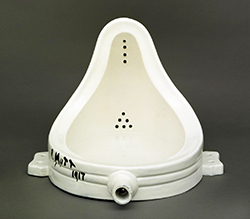 "Sculpture" by Marcel Duchamp: Fountain. Duchamp submits this work to the exhibition of the Society of Independent Artists. The piece is actually a porcelain urinal, signed R. Mutt, 1917. The work (originally conceived as a prank) is regarded by art historians as a major landmark in 20th-century art.
"Sculpture" by Marcel Duchamp: Fountain. Duchamp submits this work to the exhibition of the Society of Independent Artists. The piece is actually a porcelain urinal, signed R. Mutt, 1917. The work (originally conceived as a prank) is regarded by art historians as a major landmark in 20th-century art.
 Lucy Diggs Slowe wins the championship in the first national tennis tournament sponsored by the American Tennis Association. With her victory she becomes the first African-American woman to win a major sports title.
Lucy Diggs Slowe wins the championship in the first national tennis tournament sponsored by the American Tennis Association. With her victory she becomes the first African-American woman to win a major sports title.
 The Balfour Declaration (dated 2 November 1917) — a formal statement of policy by the British government, written by Arthur Balfour, stating that "His Majesty's government view with favour the establishment in Palestine of a national home for the Jewish people, and will use their best endeavours to facilitate the achievement of this object" — is issued. The anniversary of the declaration, 2 November, is widely commemorated in Israel and among Jews in the Jewish diaspora as Balfour Day. This day is also observed as a day of mourning in Arab countries still today.
The Balfour Declaration (dated 2 November 1917) — a formal statement of policy by the British government, written by Arthur Balfour, stating that "His Majesty's government view with favour the establishment in Palestine of a national home for the Jewish people, and will use their best endeavours to facilitate the achievement of this object" — is issued. The anniversary of the declaration, 2 November, is widely commemorated in Israel and among Jews in the Jewish diaspora as Balfour Day. This day is also observed as a day of mourning in Arab countries still today.
The October Revolution occurs in Russia, followed by the Russian Civil War.
 The United States enters World War I; Gen. Pershing goes to Paris to lead American forces.
The United States enters World War I; Gen. Pershing goes to Paris to lead American forces.
Stone tools discovered at Bir el Ater in eastern Algeria include triangular objects that might have been arrowheads or spear points. The tools will be dubbed Aterian, but their age will be underestimated for decades.
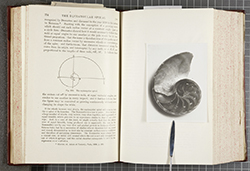 British polymath D'Arcy Wentworth Thompson publishes On Growth and Form arguing that the forms Darwinian natural selection can produce through evolution are constrained by physical and mathematical laws, and that organic structures often emulate inorganic natural structures. His analysis led the way for the scientific explanation of morphogenesis, the process by which patterns and body structures are formed in plants and animals. Thompson's description of the mathematical beauty of nature and the mathematical basis of the forms of animals stimulated thinkers as diverse as Julian Huxley, Conrad Hal Waddington, Alan Turing, Claude Lévi-Strauss, Eduardo Paolozzi, Le Corbusier, and Mies van der Rohe.
British polymath D'Arcy Wentworth Thompson publishes On Growth and Form arguing that the forms Darwinian natural selection can produce through evolution are constrained by physical and mathematical laws, and that organic structures often emulate inorganic natural structures. His analysis led the way for the scientific explanation of morphogenesis, the process by which patterns and body structures are formed in plants and animals. Thompson's description of the mathematical beauty of nature and the mathematical basis of the forms of animals stimulated thinkers as diverse as Julian Huxley, Conrad Hal Waddington, Alan Turing, Claude Lévi-Strauss, Eduardo Paolozzi, Le Corbusier, and Mies van der Rohe.
 C. B. Bridges discovers the first chromosome deficiency in Drosophila.
C. B. Bridges discovers the first chromosome deficiency in Drosophila.
 Felix Hubert D'Herelle, independently of Frederick Twort, discovers a virus capable of infecting and destroying bacteria, which he calls a BACTERIOPHAGE.
Felix Hubert D'Herelle, independently of Frederick Twort, discovers a virus capable of infecting and destroying bacteria, which he calls a BACTERIOPHAGE.
(no entry for this year)
1918
 Painting by Marcel Duchamp: Tu m'. This was Duchamp's last painting and was commissioned by Katherine Dreier to be hung over a bookcase in her library, hence the unusual length and frieze-like shape of the work. Executed in 1918, it is Marcel Duchamp's last painting on canvas and sums up his previous artistic concerns. Ranging across the canvas from left to right are cast shadows that refer to three "ready-mades": a bicycle wheel, a corkscrew, and a hat rack. Several objects are rendered illusionistically, such as a painted hand with a pointed finger in the lower center. Providing counterpoints to these trompe l'oeil elements are real objects: a bottle brush, a bolt, and safety pins. Duchamp summarizes different ways in which a work of art can suggest reality: as shadow, imitation, or actual object. The title lends a sarcastic tone to the work, for the words, perhaps short for the French "tu m'emmerdes" (you annoy me) or "tu m'ennuies" (you bore me), seem to express his attitude toward painting as he was casting it aside.
Painting by Marcel Duchamp: Tu m'. This was Duchamp's last painting and was commissioned by Katherine Dreier to be hung over a bookcase in her library, hence the unusual length and frieze-like shape of the work. Executed in 1918, it is Marcel Duchamp's last painting on canvas and sums up his previous artistic concerns. Ranging across the canvas from left to right are cast shadows that refer to three "ready-mades": a bicycle wheel, a corkscrew, and a hat rack. Several objects are rendered illusionistically, such as a painted hand with a pointed finger in the lower center. Providing counterpoints to these trompe l'oeil elements are real objects: a bottle brush, a bolt, and safety pins. Duchamp summarizes different ways in which a work of art can suggest reality: as shadow, imitation, or actual object. The title lends a sarcastic tone to the work, for the words, perhaps short for the French "tu m'emmerdes" (you annoy me) or "tu m'ennuies" (you bore me), seem to express his attitude toward painting as he was casting it aside.
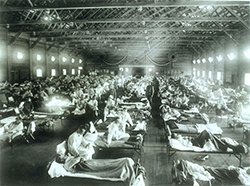 A worldwide influenza epidemic strikes. By 1920, 50 to 100 millions are dead, including Mark Sykes, the author of the British half of the Sykes-Picot Treaty.
A worldwide influenza epidemic strikes. By 1920, 50 to 100 millions are dead, including Mark Sykes, the author of the British half of the Sykes-Picot Treaty.
First reported connection between smoking and lung cancer.
Core memory inventor Jay Forrester is born
(no entry for this year)
1919
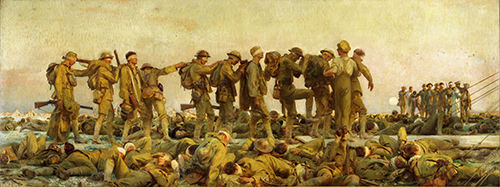 Painting by John Singer Sargent: Gassed is a very large (7.5 × 20 feet) oil painting completed in March 1919 by John Singer Sargent. It depicts the aftermath of a mustard gas attack during the First World War, with a line of wounded soldiers walking towards a dressing station. Sargent was commissioned by the British War Memorials Committee to document the war and visited the Western Front in July 1918 spending time with the Guards Division near Arras, and then with the American Expeditionary Forces near Ypres. The painting was finished in March 1919 and voted picture of the year by the Royal Academy of Arts in 1919. It is now held by the Imperial War Museum.
Painting by John Singer Sargent: Gassed is a very large (7.5 × 20 feet) oil painting completed in March 1919 by John Singer Sargent. It depicts the aftermath of a mustard gas attack during the First World War, with a line of wounded soldiers walking towards a dressing station. Sargent was commissioned by the British War Memorials Committee to document the war and visited the Western Front in July 1918 spending time with the Guards Division near Arras, and then with the American Expeditionary Forces near Ypres. The painting was finished in March 1919 and voted picture of the year by the Royal Academy of Arts in 1919. It is now held by the Imperial War Museum.
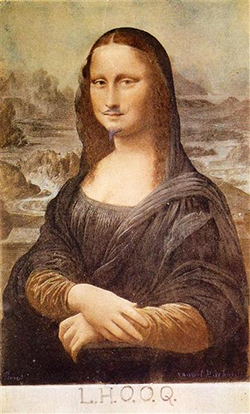 Work by Marcel Duchamp: L.H.O.O.Q., was one of what Duchamp referred to as a readymade, or more specifically a rectified ready-made. The readymade involves taking mundane, often utilitarian objects not generally considered to be art and transforming them, by adding to them, changing them, or (as in the case of his most famous work Fountain) simply renaming them and placing them in a gallery setting. In L.H.O.O.Q. the objet trouvé ("found object") is a cheap postcard reproduction of Leonardo da Vinci's Mona Lisa onto which Duchamp drew a moustache and beard in pencil and appended the title. The name of the piece, L.H.O.O.Q., is a pun; the letters pronounced in French sound like "Elle a chaud au cul", "She is hot in the arse"; "avoir chaud au cul" is a vulgar expression implying that a woman has sexual restlessness. In a late interview, Duchamp gives a loose translation of L.H.O.O.Q. as "there is fire down below". As was the case with a number of his readymades, Duchamp made multiple versions of L.H.O.O.Q. of differing sizes and in different media throughout his career, one of which, an unmodified black and white reproduction of the Mona Lisa mounted on card, is called L.H.O.O.Q. Shaved.
Work by Marcel Duchamp: L.H.O.O.Q., was one of what Duchamp referred to as a readymade, or more specifically a rectified ready-made. The readymade involves taking mundane, often utilitarian objects not generally considered to be art and transforming them, by adding to them, changing them, or (as in the case of his most famous work Fountain) simply renaming them and placing them in a gallery setting. In L.H.O.O.Q. the objet trouvé ("found object") is a cheap postcard reproduction of Leonardo da Vinci's Mona Lisa onto which Duchamp drew a moustache and beard in pencil and appended the title. The name of the piece, L.H.O.O.Q., is a pun; the letters pronounced in French sound like "Elle a chaud au cul", "She is hot in the arse"; "avoir chaud au cul" is a vulgar expression implying that a woman has sexual restlessness. In a late interview, Duchamp gives a loose translation of L.H.O.O.Q. as "there is fire down below". As was the case with a number of his readymades, Duchamp made multiple versions of L.H.O.O.Q. of differing sizes and in different media throughout his career, one of which, an unmodified black and white reproduction of the Mona Lisa mounted on card, is called L.H.O.O.Q. Shaved.
By the beginning of 1919, the Ku Klux Klan (revived in 1915 at Stone Mountain, Georgia) operates in 27 states. Eighty-three African Americans are lynched during the year, among them a number of returning soldiers still in uniform.
 C. B. Bridges discovers chromosomal duplications in Drosophila.
C. B. Bridges discovers chromosomal duplications in Drosophila.
 T. H. Morgan calls attention to the equality in Drosophila melanogaster between the number of linkage groups and the haploid number of chromosomes.
T. H. Morgan calls attention to the equality in Drosophila melanogaster between the number of linkage groups and the haploid number of chromosomes.
Swedish geologist Johann Andersson discovers a major "dragon bone works" in northern China. Otto Zdansky also examines the works several years later, discovering that the fossils are referred to as dragons even though the workers recognize them as more pedestrian species such as horses and deer.
ENIAC Designer Presper Eckert Is Born
ESP Quick Facts
ESP Origins
In the early 1990's, Robert Robbins was a faculty member at Johns Hopkins, where he directed the informatics core of GDB — the human gene-mapping database of the international human genome project. To share papers with colleagues around the world, he set up a small paper-sharing section on his personal web page. This small project evolved into The Electronic Scholarly Publishing Project.
ESP Support
In 1995, Robbins became the VP/IT of the Fred Hutchinson Cancer Research Center in Seattle, WA. Soon after arriving in Seattle, Robbins secured funding, through the ELSI component of the US Human Genome Project, to create the original ESP.ORG web site, with the formal goal of providing free, world-wide access to the literature of classical genetics.
ESP Rationale
Although the methods of molecular biology can seem almost magical to the uninitiated, the original techniques of classical genetics are readily appreciated by one and all: cross individuals that differ in some inherited trait, collect all of the progeny, score their attributes, and propose mechanisms to explain the patterns of inheritance observed.
ESP Goal
In reading the early works of classical genetics, one is drawn, almost inexorably, into ever more complex models, until molecular explanations begin to seem both necessary and natural. At that point, the tools for understanding genome research are at hand. Assisting readers reach this point was the original goal of The Electronic Scholarly Publishing Project.
ESP Usage
Usage of the site grew rapidly and has remained high. Faculty began to use the site for their assigned readings. Other on-line publishers, ranging from The New York Times to Nature referenced ESP materials in their own publications. Nobel laureates (e.g., Joshua Lederberg) regularly used the site and even wrote to suggest changes and improvements.
ESP Content
When the site began, no journals were making their early content available in digital format. As a result, ESP was obliged to digitize classic literature before it could be made available. For many important papers — such as Mendel's original paper or the first genetic map — ESP had to produce entirely new typeset versions of the works, if they were to be available in a high-quality format.
ESP Help
Early support from the DOE component of the Human Genome Project was critically important for getting the ESP project on a firm foundation. Since that funding ended (nearly 20 years ago), the project has been operated as a purely volunteer effort. Anyone wishing to assist in these efforts should send an email to Robbins.
ESP Plans
With the development of methods for adding typeset side notes to PDF files, the ESP project now plans to add annotated versions of some classical papers to its holdings. We also plan to add new reference and pedagogical material. We have already started providing regularly updated, comprehensive bibliographies to the ESP.ORG site.
ESP Picks from Around the Web (updated 06 MAR 2017 )
Old Science

Weird Science

Treating Disease with Fecal Transplantation
Fossils of miniature humans (hobbits) discovered in Indonesia

Dinosaur tail, complete with feathers, found preserved in amber.
Astronomy

Mysterious fast radio burst (FRB) detected in the distant universe.